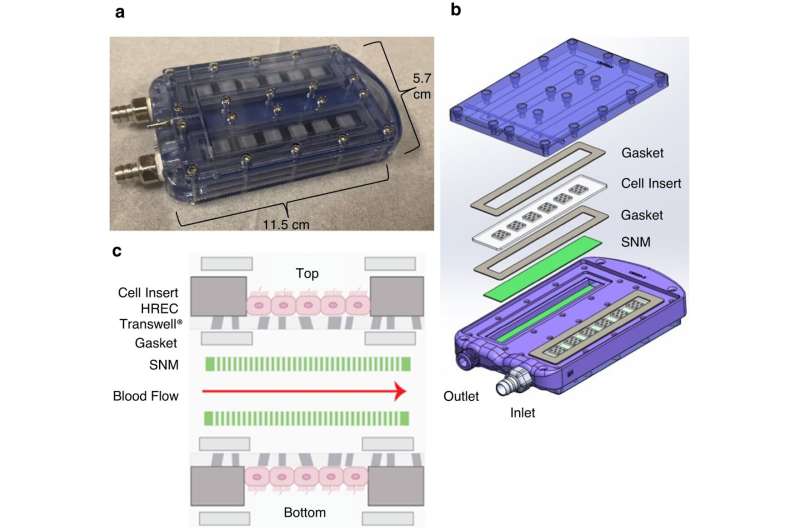This article has been reviewed according to Science X's editorial process and policies. Editors have highlighted the following attributes while ensuring the content's credibility:
fact-checked
peer-reviewed publication
trusted source
proofread
Implantable bioreactor study works toward a bioartificial kidney to free patients from dialysis

Scientists at UC San Francisco are working on a new approach to treating kidney failure that could one day free people from needing dialysis or having to take harsh drugs to suppress their immune system after a transplant.
They have shown for the first time that kidney cells, housed in an implantable device called a bioreactor, can survive inside the body of a pig and mimic several important kidney functions. The device can work quietly in the background, like a pacemaker, and does not trigger the recipient's immune system to go on the attack.
The findings, published in Nature Communications on August 29, 2023, are an important step forward for The Kidney Project, which is jointly headed by UCSF's Shuvo Roy, Ph.D. (technical director) and Vanderbilt University Medical Center's William H. Fissell, MD (medical director).
Eventually, scientists plan to fill the bioreactor with different kidney cells that perform vital functions like balancing the body's fluids and releasing hormones to regulate blood pressure—then pair it with a device that filters waste from the blood.
The aim is to produce a human-scale device to improve on dialysis, which keeps people alive after their kidneys fail but is a poor substitute for having a real working organ. More than 500,000 people in the U.S. require dialysis several times a week. Many seek kidney transplants, but there are not enough donors, and only about 20,000 people receive them each year. An implantable kidney would be a boon.
"We are focused on safely replicating the key functions of a kidney," said Roy, a bioengineering professor in the UCSF School of Pharmacy. "The bioartificial kidney will make treatment for kidney disease more effective and also much more tolerable and comfortable."
Inspired by nature, honed by science
Roy and his colleagues engineered the bioreactor to connect directly to blood vessels and veins, allowing the passage of nutrients and oxygen, much like a transplanted kidney would. Silicon membranes keep the kidney cells inside the bioreactor safe from attack by the recipient's immune cells.
The team used a type of kidney cell called a proximal tubule cell, which regulates water, as a test case. Co-author H. David Humes, MD, from the University of Michigan, had previously used these cells to help dialysis patients in the intensive care unit with life-saving results.
A green light for The Kidney Project
The team tracked the kidney cells and the recipient animals for seven days after transplantation and both did well. The next step will be month-long trials, as required for by the U.S. Food and Drug Administration (FDA), first in animals and eventually in humans.
"We needed to prove that a functional bioreactor will not require immunosuppressant drugs, and we did," Roy said. "We had no complications and can now iterate up, reaching for the whole panel of kidney functions at the human scale."
More information: Eun Jung Kim et al, Feasibility of an implantable bioreactor for renal cell therapy using silicon nanopore membranes, Nature Communications (2023). DOI: 10.1038/s41467-023-39888-2

















